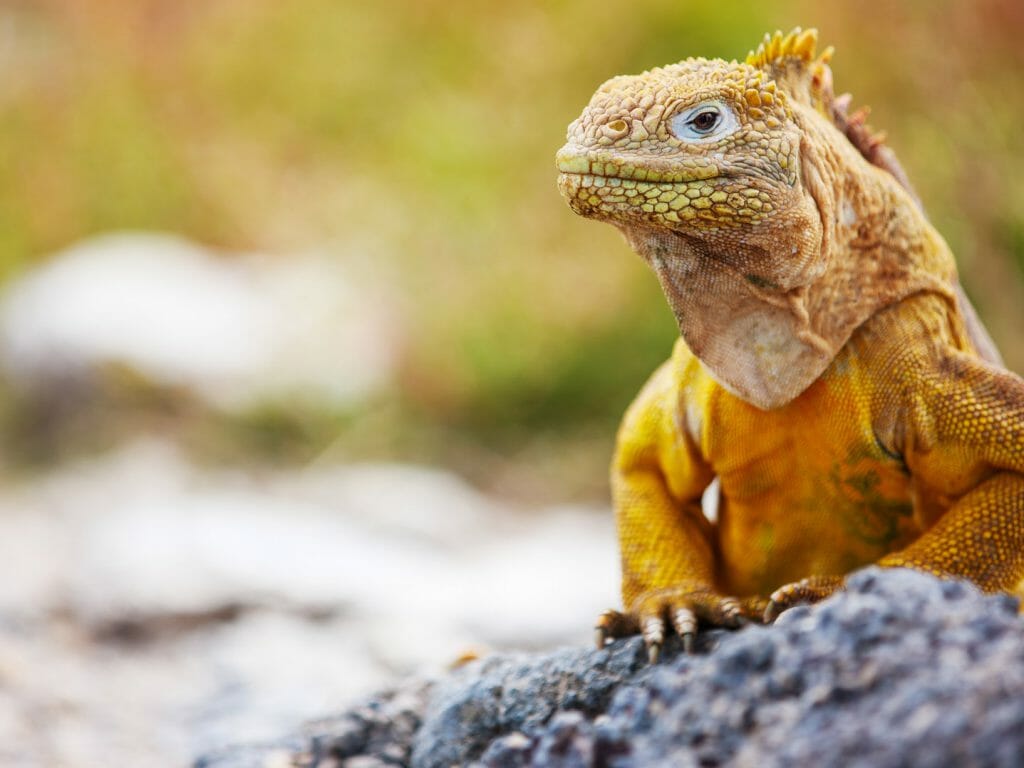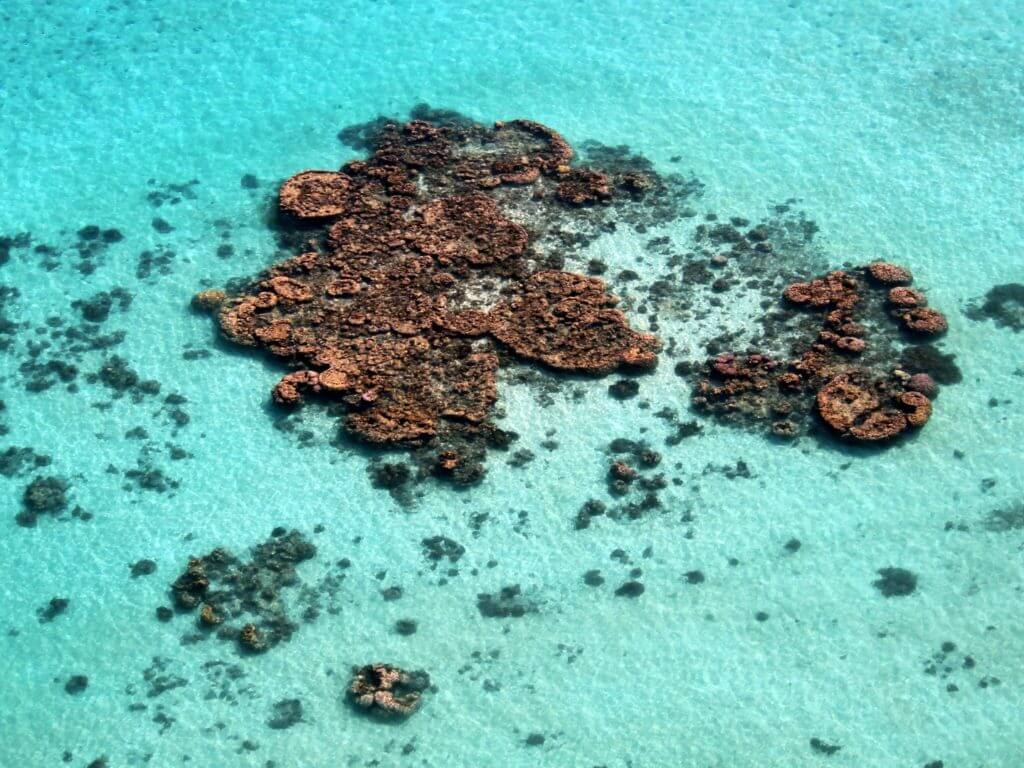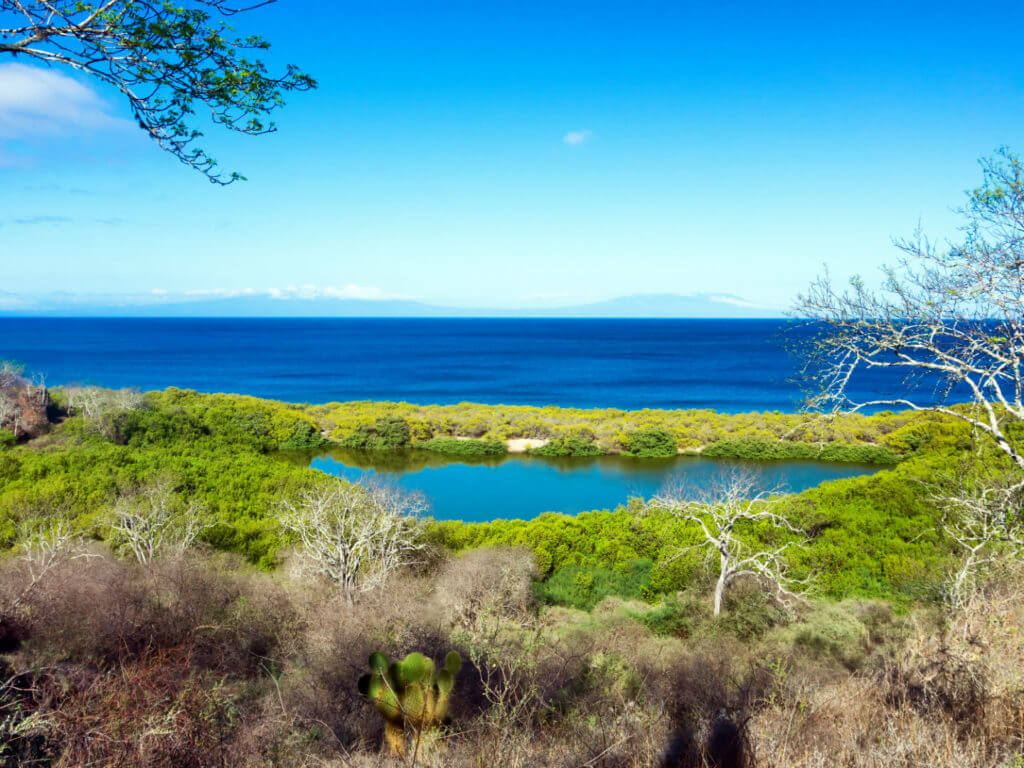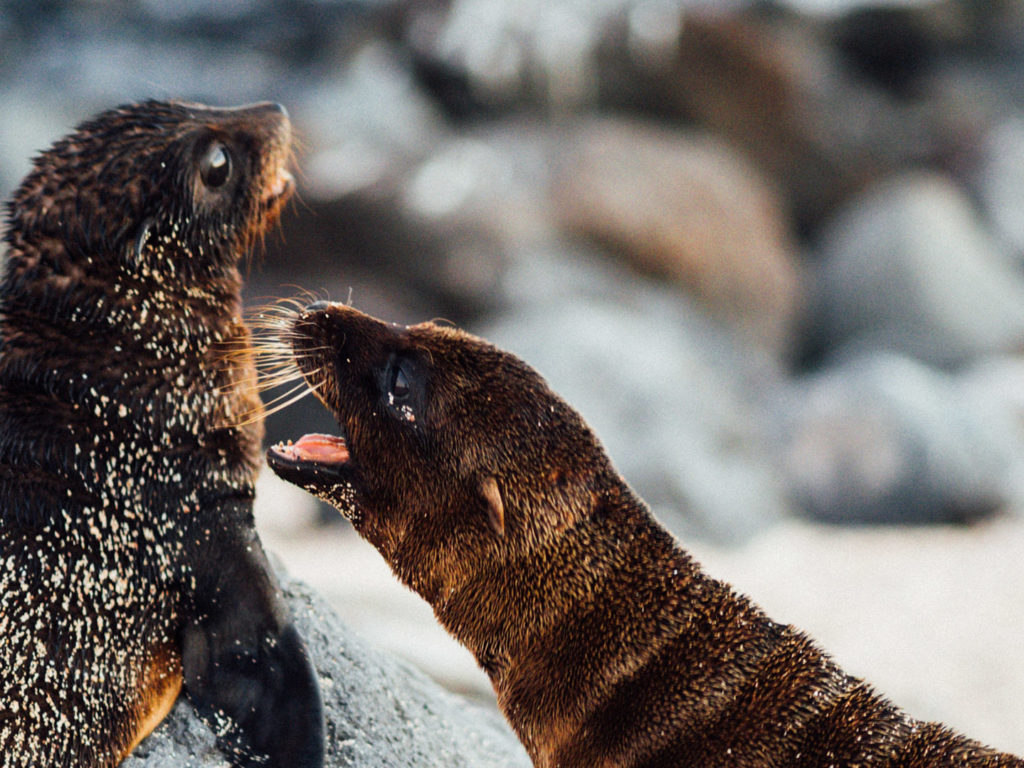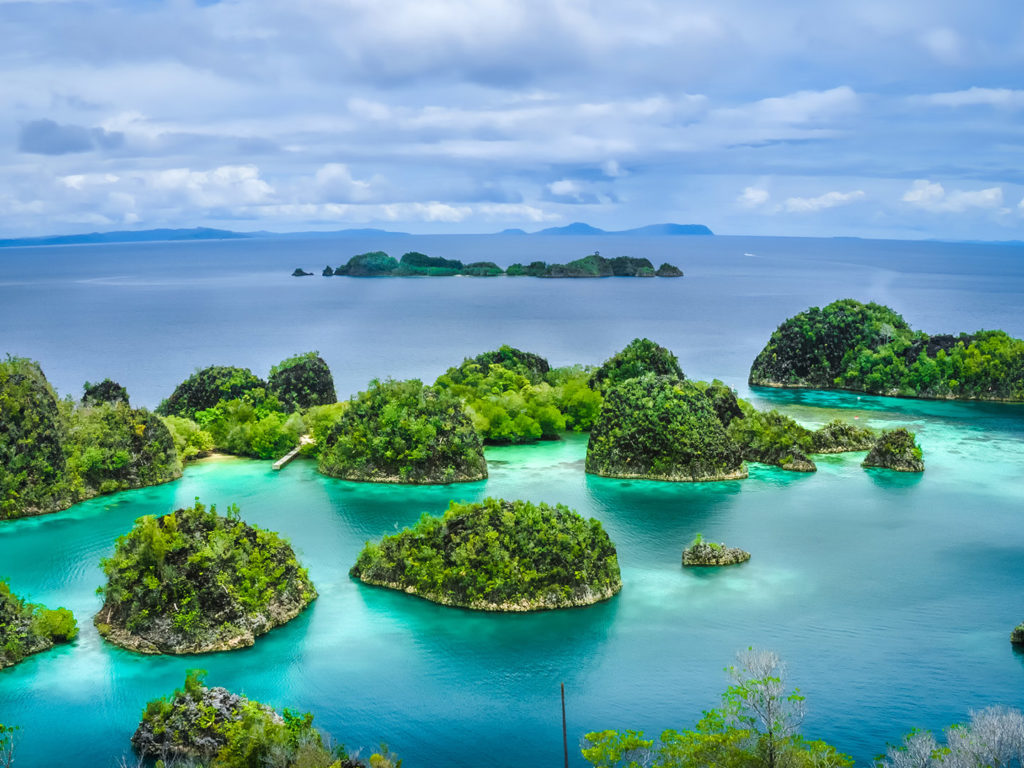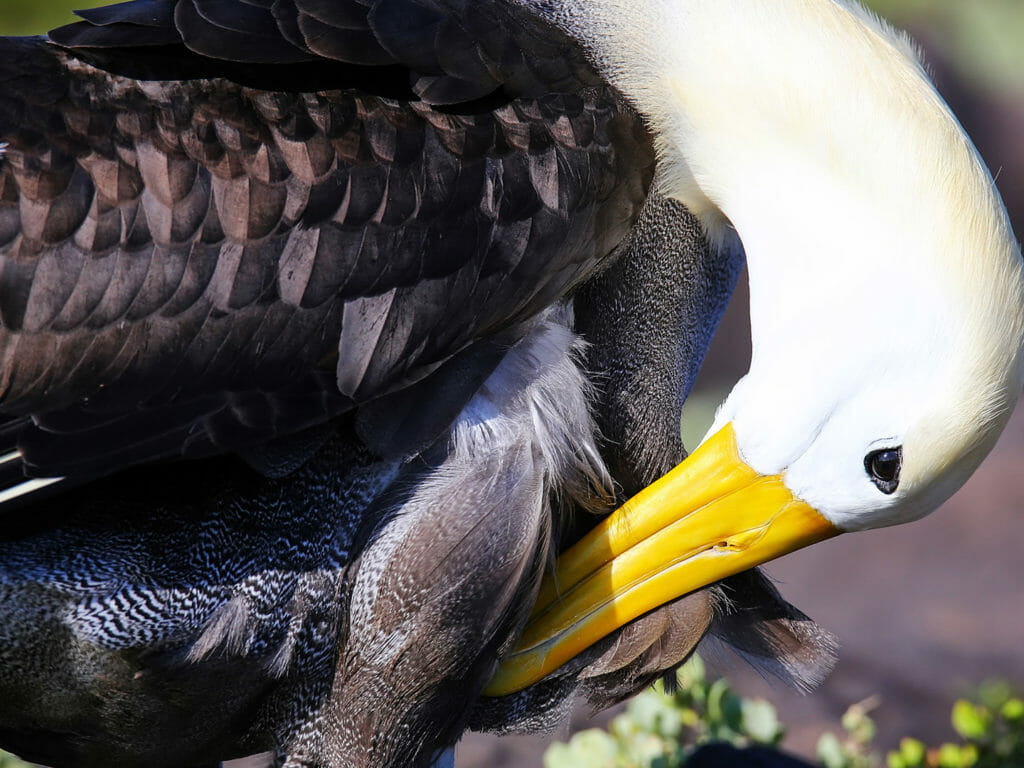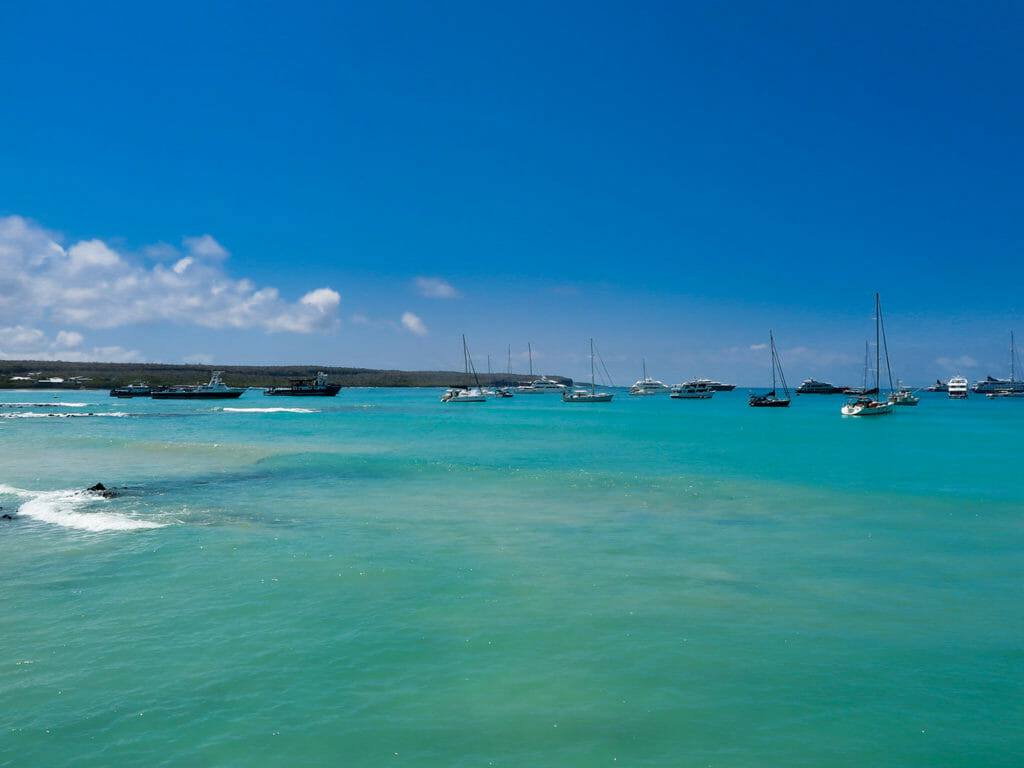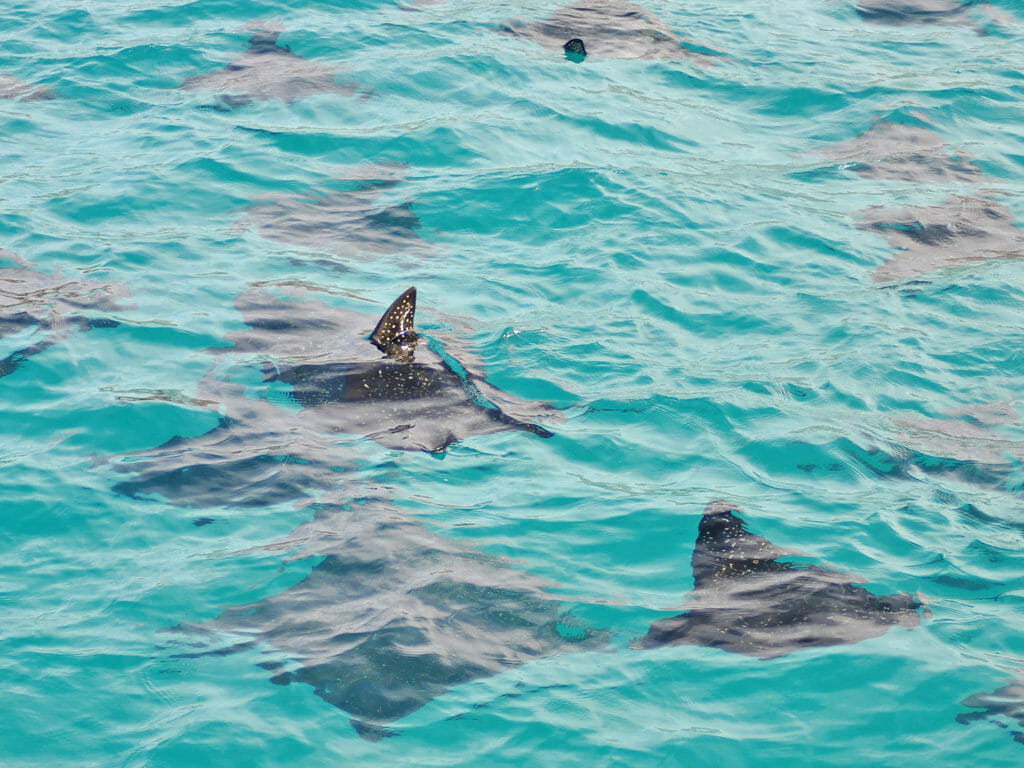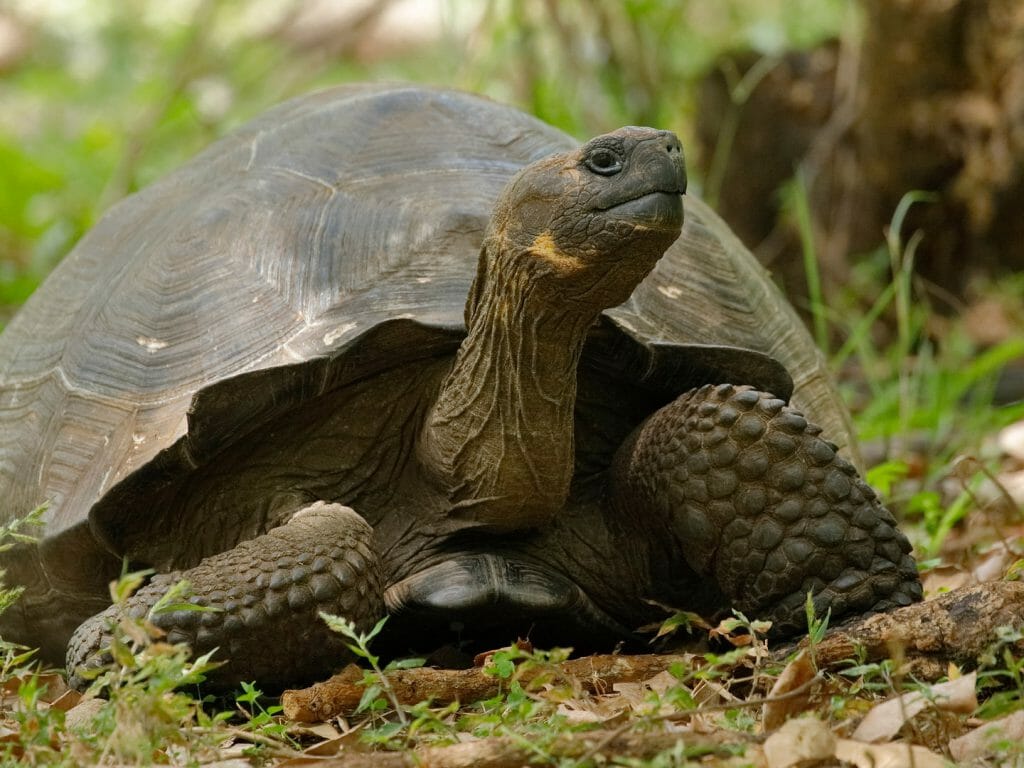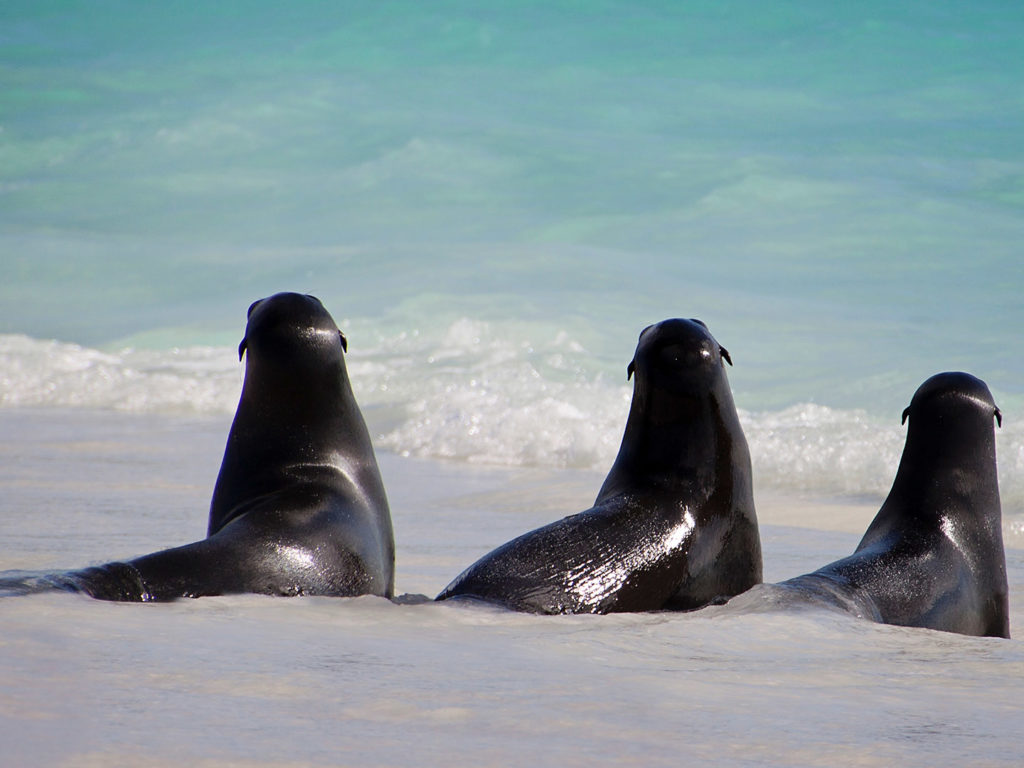‘This is a good spot to find turtles,’ Bolivar our guide said as we adjusted our masks and put our flippers on, ‘but the water might be cold’. Those were the last words I heard as I slid from the panga into the water. He wasn’t wrong on either front. Submerging into the bay, my lungs tightened and breath become shorter, wow, this water was more than cold.
I started to swim to warm up, before long my breath started to regulate and eyes adjusted to this silent underwater world. Moving through the water, eagerly looking all around, a dark round shape came into view. A turtle! Excitedly looking around to find my husband, he was nodding in excited agreement. We swam slowly along, not more than an arms-length from the gentle creature, just floating in the current. More and more turtles came into view, there were three, four, five, six of these giant animals just floating beside us. Looking around, we were totally surrounded, there were turtles in every direction, from the sea bed to the water’s surface. They were not in the slightest bit disturbed by us, just floating gently backwards and forwards in the current grazing on algae with wise old eyes. We felt compelled to do the same and just drifted in the water, part of this 50-strong bale.
The serenity of these ancient creatures, the silence of being under water and the swaying in the rhythmic pattern of the waves was almost meditative. The numbness in the fingers and the tightness in the cold muscles was the only reason to force us from the water. As we got back into the panga, cold and shivering, I knew we had just witnessed a special moment, one of many, the enchanting Galapagos Islands have to offer.
The Galapagos archipelago straddles the equator, 600 miles off the coast of Ecuador. A national park, marine reserve and truly special place. A 90-minute flight over the Pacific Ocean brings you to the islands, you can feel the excitement levels build inside the plane as they come into view and people clamber to get a glimpse of the much-anticipated islands. I have been fortunate to visit these islands a few times before so did wonder whether the magic would still be there for me? Is there anything new the islands have to offer? Stepping off the plane onto the runway, I felt the same buzz and excitement as a decade ago and knew the answer to my first question. A definite yes.
Our seven-day aquatic adventure, took in several Galapagos islands offering a glimpse into the different ecosystems of the famed islands, brilliantly narrated and educated by our superb guides and with inspiring evening lectures from evolutionary biologist Professor Richard Dawkins. Whilst taking the short crossing to the island of Fernandina, the western-most, youngest and most volcanically-active of the islands, our guide noticed something unusual in the behaviour of the birds. A quick detour took us to an area where blue-footed boobies were flying in ever increasing numbers above our heads. ‘There must be sardines in the area,’ said Bolivar ‘the birds have all come for lunch’. There were vast numbers of blue footed boobies, brown pelicans and frigate birds, the sky was full. The birds seemed to hover, stop and fall from the sky as if someone turned gravity off, hitting the water like arrow heads. It was as if it was raining birds. No sooner had they dived than they resurfaced and regrouped like a synchronised air display. The birds fly overhead looking at the school of fish, one of the boobies gives the signal and then they all dive at the same time, this startles and scatters the fish, meaning a better chance of a catch. Half an hour passed as we watched in awe at this fascinating behaviour, including the guides who were equally excited by this rare spectacle.
After a week cruising in these enchanting islands, they did not disappoint, with so many new experiences to add to my memories. The Galapagos still hold the magic and the answers to my initial questions were a big yes and yes.


